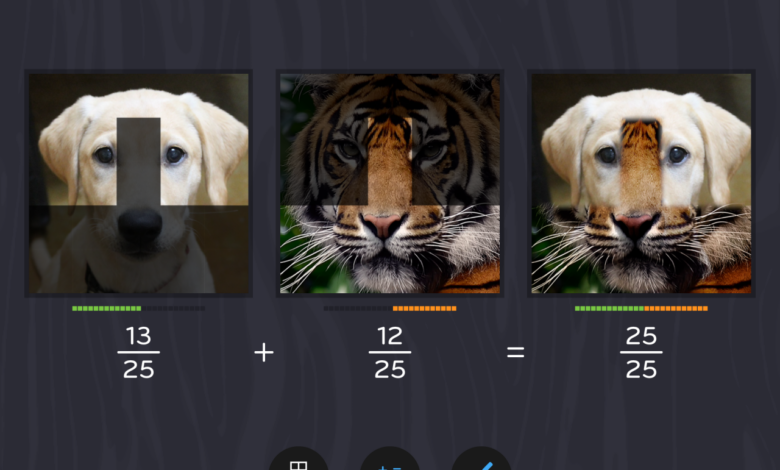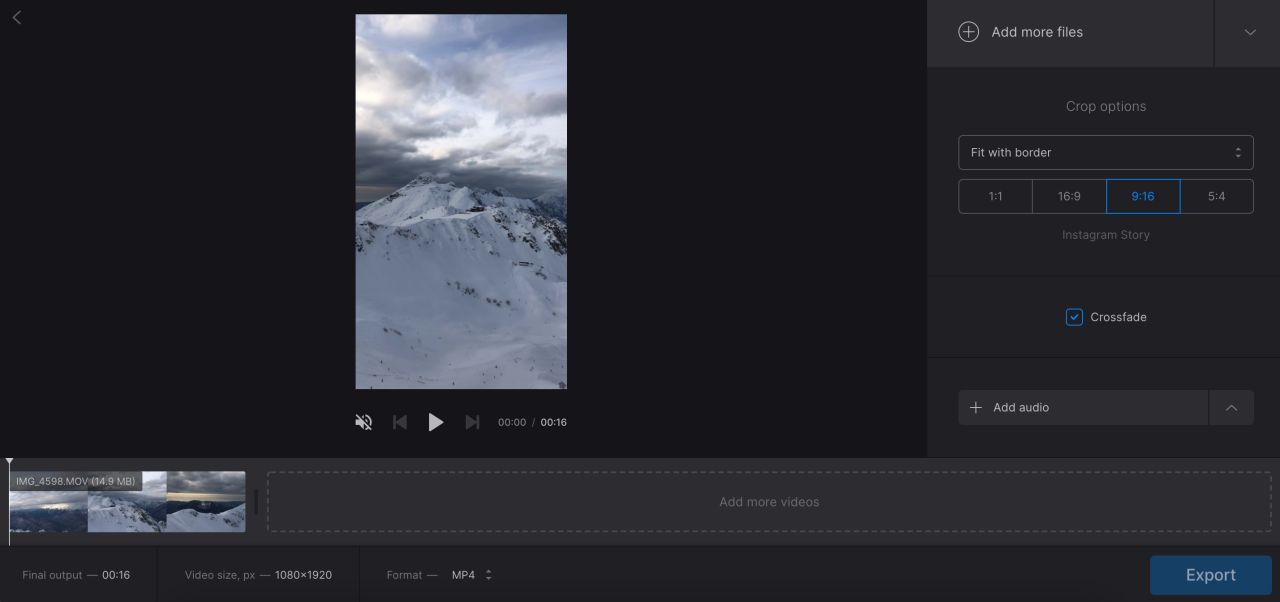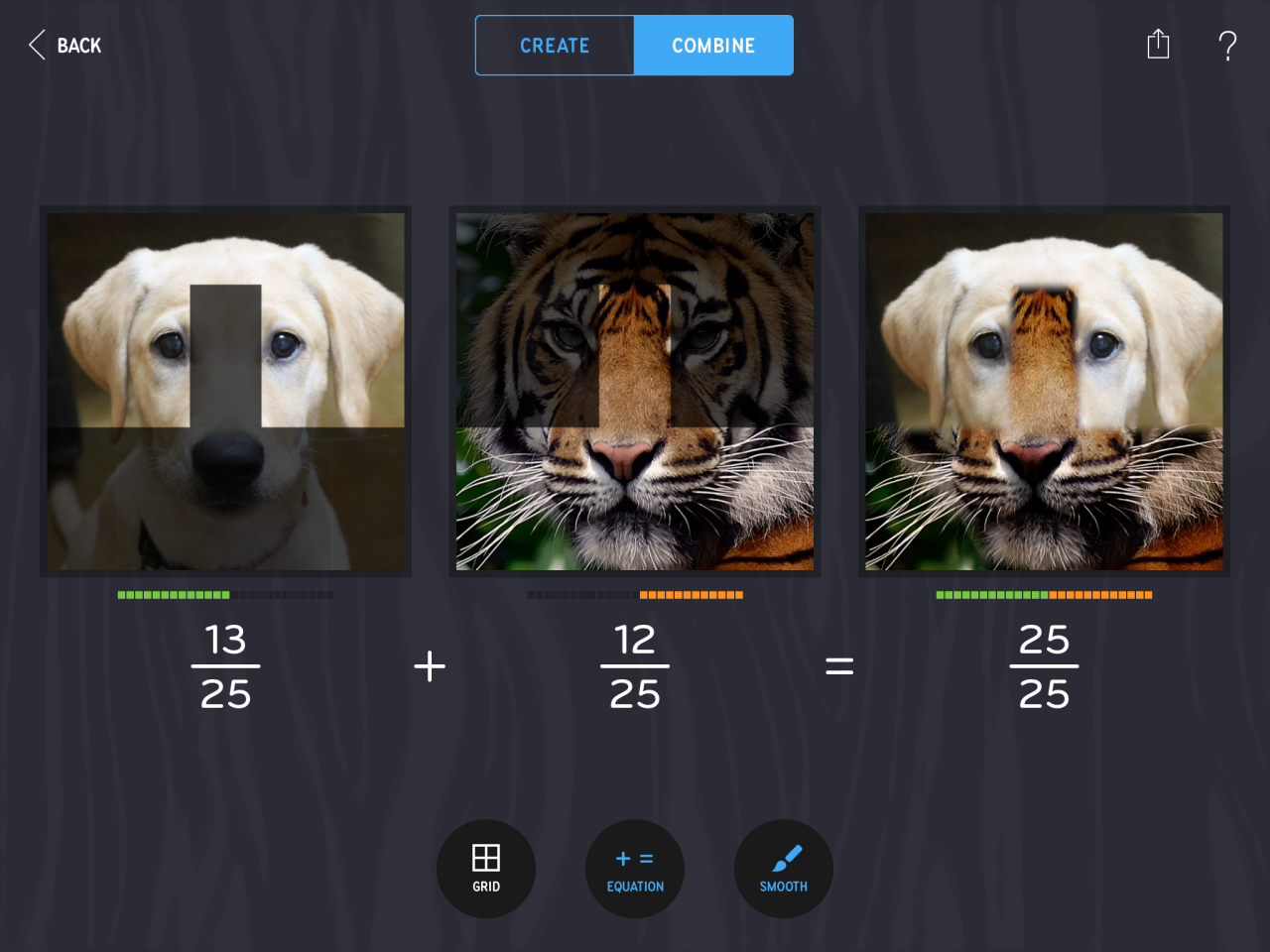
6 Ways to Maximize Popular Mashup Classes
6 Ways to Maximize Popular Mashup Classes: Imagine a classroom where history meets coding, or where art blends with business. That’s the exciting world of mashup classes, where students explore the intersections of different disciplines, sparking creativity and pushing boundaries.
These classes are gaining popularity, and for good reason. They offer a unique learning experience that is both engaging and relevant to today’s complex world.
So how can educators maximize the potential of these innovative courses? This post dives into six key strategies for crafting engaging mashup classes that truly inspire and empower students. We’ll explore everything from designing captivating content to leveraging technology for collaborative learning and building a strong community of learners.
Crafting Engaging Course Content: 6 Ways To Maximize Popular Mashup Classes
Mashup classes offer a unique opportunity to engage students by blending diverse fields and fostering interdisciplinary thinking. To make these courses truly impactful, crafting engaging content is essential. This involves carefully selecting relevant themes, designing a structured syllabus, and implementing innovative teaching strategies.
Successful Mashup Class Themes, 6 ways to maximize popular mashup classes
Successful mashup classes often draw from the intersection of diverse fields, creating unique learning experiences. Here are some examples:
- Art and Technology:Exploring the evolution of digital art, the role of technology in artistic expression, and the impact of AI on creative industries.
- Business and Psychology:Examining consumer behavior, the psychology of marketing, and the influence of human emotions on business decisions.
- History and Literature:Analyzing historical events through literary lenses, exploring the social and cultural contexts of classic works, and examining the impact of literature on historical movements.
- Science and Society:Discussing the ethical implications of scientific advancements, exploring the social impact of scientific discoveries, and examining the role of science in shaping society.
Designing a Hypothetical Mashup Class Syllabus
A well-structured syllabus is crucial for guiding students through the learning journey in a mashup class. Here’s a hypothetical syllabus for a “Science Fiction and Social Justice” course:
| Module | Learning Objectives |
|---|---|
| Introduction to Science Fiction | Students will be able to identify key themes and tropes in science fiction literature and film. |
| Social Justice Movements | Students will gain an understanding of various social justice movements and their historical context. |
| Science Fiction as a Tool for Social Commentary | Students will analyze how science fiction texts address social and political issues. |
| The Future of Social Justice | Students will explore potential solutions and challenges for social justice in the future, drawing inspiration from science fiction. |
| Creating a Science Fiction Short Story | Students will write a short story that incorporates elements of science fiction and social justice. |
Creative Teaching Strategies
Mashup classes require innovative teaching approaches to engage students in interdisciplinary learning. Here are some creative strategies:
- Interactive Guest Lectures:Invite experts from different fields to share their perspectives on the chosen theme. This allows students to learn from diverse viewpoints and understand the interconnectedness of different disciplines.
- Collaborative Projects:Encourage students to work in groups on projects that integrate concepts from different fields. This promotes teamwork, critical thinking, and the ability to synthesize knowledge from various sources.
- Debates and Role-Playing:Facilitate discussions and debates on complex issues related to the course theme. This encourages students to critically evaluate different perspectives and develop their argumentation skills.
- Creative Writing and Storytelling:Encourage students to express their understanding of the course content through creative writing, storytelling, or multimedia projects. This fosters imagination, critical thinking, and communication skills.
Leveraging Technology for Enhanced Learning
In the realm of mashup classes, technology serves as a powerful catalyst, fostering cross-disciplinary exploration and enhancing student engagement. By seamlessly integrating digital tools and platforms, instructors can create dynamic learning environments that transcend traditional boundaries.
Utilizing Online Platforms and Digital Tools for Enhanced Student Engagement and Collaboration
Online platforms and digital tools play a pivotal role in amplifying student engagement and collaboration within mashup classes. These tools provide a virtual space for students to interact, share ideas, and work together on projects, fostering a sense of community and shared learning.
From mastering the perfect squat to nailing that high-intensity interval, there are tons of ways to maximize your popular mashup class experience. And while you’re pushing yourself to the limit, you might wonder if all that effort is helping you shed those extra pounds.
You might be surprised to learn that lifting weights can actually play a big role in your weight loss journey – check out this article to learn more about how can lifting weights help you lose fat. Once you’ve got the science down, you can focus on maximizing your mashup class experience by setting realistic goals, staying hydrated, and listening to your body.
- Learning Management Systems (LMS):Platforms like Canvas, Moodle, and Blackboard offer a centralized hub for course materials, assignments, discussions, and communication. Students can access course content, submit assignments, participate in online forums, and engage in interactive activities, all within a single platform.
- Collaboration Tools:Tools like Google Docs, Google Slides, and Microsoft Teams facilitate real-time collaboration on projects and assignments. Students can work together on documents, presentations, and spreadsheets, regardless of their physical location. This promotes teamwork, communication, and shared ownership of learning outcomes.
- Video Conferencing Platforms:Zoom, Microsoft Teams, and Google Meet enable synchronous interactions, facilitating live lectures, group discussions, and virtual guest speaker presentations. Students can participate in real-time conversations, ask questions, and engage with the material in a dynamic and interactive manner.
Connecting Students with Industry Professionals and Experts
Technology empowers instructors to bridge the gap between academia and the real world by connecting students with industry professionals and experts in various fields. This exposure provides students with invaluable insights into practical applications, industry trends, and career paths.
Want to get the most out of your popular mashup classes? It’s all about pushing yourself, and that means consistently challenging your body. Think about incorporating new moves, increasing your weights, or even just upping the intensity. To make sure you’re truly progressing, check out this article on 6 ways to avoid workout plateaus and consistently progress.
You’ll find tips on how to keep your workouts fresh and effective, so you can keep seeing those amazing results in your mashup classes.
- Virtual Guest Speaker Series:Online platforms allow instructors to invite professionals from diverse industries to share their experiences, expertise, and perspectives with students. This provides students with firsthand insights into the real-world applications of their studies and exposes them to different career paths.
- Online Mentorship Programs:Digital platforms facilitate online mentorship programs, connecting students with professionals in their fields of interest. Mentors can provide guidance, support, and valuable career advice, fostering a strong sense of community and professional development.
- Industry-Specific Online Communities:Students can join online communities and forums dedicated to their fields of study, connecting with professionals, peers, and experts. These platforms provide opportunities for networking, knowledge sharing, and staying up-to-date on industry trends.
Building a Strong Community

In the dynamic world of mashup classes, where students from diverse backgrounds converge to learn and collaborate, building a strong community is paramount. Fostering a supportive and inclusive learning environment not only enhances the educational experience but also creates a sense of belonging and shared purpose.
Promoting Peer-to-Peer Learning and Collaboration
A key aspect of creating a thriving community in mashup classes is to encourage peer-to-peer learning and collaboration. Students bring unique perspectives and experiences to the classroom, and by fostering an environment of mutual respect and open communication, they can learn from each other’s strengths.Here are some strategies for promoting peer-to-peer learning and collaboration:
- Group Projects:Assign projects that require students to work together in diverse groups, leveraging their different skill sets and knowledge bases. This allows them to learn from each other’s approaches and perspectives.
- Peer Feedback Sessions:Implement regular peer feedback sessions where students provide constructive criticism and suggestions on each other’s work. This not only improves the quality of their work but also helps them develop valuable communication and critical thinking skills.
- Collaborative Learning Platforms:Utilize online platforms like forums, wikis, or collaborative document editors to facilitate ongoing discussions and shared learning experiences. This allows students to connect and engage with each other outside of the classroom.
Creating Opportunities for Networking and Connection
Mashup classes provide an excellent opportunity for students to network and connect with others in their field of interest. By creating intentional spaces for interaction and collaboration, you can help students build lasting professional relationships.Here are some ways to create opportunities for networking and connection:
- Guest Speaker Events:Invite industry professionals or experts to share their experiences and insights with students. This can provide valuable networking opportunities and help students gain a better understanding of the real-world applications of their studies.
- Career Fairs and Job Placement Events:Organize career fairs or job placement events that connect students with potential employers. This can help students explore career options and make valuable connections.
- Social Events and Gatherings:Host informal social events or gatherings to encourage students to interact with each other outside of the classroom. This can foster a sense of community and camaraderie.
Assessing Learning Outcomes

In a mashup class, where diverse learning styles and approaches converge, evaluating student learning requires a multi-faceted approach that goes beyond traditional assessments. A comprehensive assessment plan should align with the unique learning objectives of the course and provide valuable insights into student progress.
From incorporating interval training to focusing on proper form, there are tons of ways to maximize your experience in popular mashup classes. Remember, these classes often challenge your cardiovascular system, which is directly linked to your VO2 max, a measure of your body’s ability to use oxygen.
If you’re looking to boost your VO2 max, check out this article on what is VO2 max and how can you improve it to learn more. Ultimately, understanding your VO2 max can help you push yourself further in your mashup classes and achieve better results.
Designing a Comprehensive Assessment Plan
The assessment plan should incorporate various methods to capture the full spectrum of learning outcomes. It should include a mix of formative and summative assessments, with a focus on authentic tasks that mirror real-world applications of the knowledge and skills acquired.
- Formative Assessments:These assessments provide ongoing feedback to both students and instructors, allowing for adjustments in teaching and learning strategies. Examples include:
- In-class activities and discussions:Encourage active participation and promote critical thinking through interactive exercises and group discussions.
- Short quizzes and polls:Gauge understanding of key concepts and provide immediate feedback.
- Peer feedback and self-reflection:Foster collaboration and encourage students to evaluate their own learning progress.
- Summative Assessments:These assessments provide a final evaluation of student learning at the end of a unit or course. Examples include:
- Projects and presentations:Allow students to demonstrate their understanding through real-world applications and creative problem-solving.
- Portfolios:Showcase a collection of student work over time, demonstrating growth and development.
- Case studies and simulations:Provide opportunities to apply knowledge in realistic scenarios.
Innovative Assessment Methods
Traditional exams and quizzes can be valuable tools, but incorporating innovative assessment methods can enhance the learning experience and provide a more holistic view of student progress.
- Problem-based learning (PBL):Students work collaboratively to solve real-world problems, applying their knowledge and skills in a practical context.
- Project-based learning (PBL):Students engage in extended projects that require them to research, design, and implement solutions, demonstrating their understanding through tangible outcomes.
- Digital storytelling and multimedia presentations:Students create compelling narratives and multimedia presentations to showcase their learning and engage with diverse audiences.
- Online forums and discussion boards:Facilitate asynchronous discussions, allowing students to share ideas, ask questions, and engage in critical thinking.
Evaluating the Effectiveness of Mashup Classes
Evaluating the effectiveness of mashup classes requires a multi-pronged approach that considers both quantitative and qualitative data.
- Quantitative data:This includes student performance on assessments, attendance rates, and feedback surveys.
- Student performance:Analyze student scores on assessments to identify areas of strength and weakness.
- Attendance rates:Track attendance to gauge student engagement and identify potential barriers to participation.
- Feedback surveys:Gather student feedback on the course content, teaching methods, and overall learning experience.
- Qualitative data:This includes student reflections, focus group discussions, and observations of student engagement.
- Student reflections:Encourage students to reflect on their learning journey, identifying key takeaways and areas for improvement.
- Focus group discussions:Gather insights from students about their perceptions of the course and its effectiveness.
- Observations of student engagement:Observe student participation in class activities, discussions, and projects to assess their level of engagement and learning.
Promoting Mashup Classes
Promoting mashup classes effectively requires a well-structured marketing plan that highlights their unique value proposition and reaches the right audience. This involves identifying key channels for dissemination, developing engaging strategies to build awareness, and generating interest within the educational community.
Marketing Plan for a Hypothetical Mashup Class
A hypothetical mashup class combining “Introduction to Data Science” and “Principles of Marketing” could be marketed as “Data-Driven Marketing Strategies.” This class would appeal to students interested in applying data analysis techniques to real-world marketing challenges. The marketing plan would emphasize the unique features and benefits of this mashup class:
- Interdisciplinary Approach:This class combines two distinct but complementary fields, providing students with a comprehensive understanding of data-driven marketing strategies.
- Practical Applications:Students will learn how to use data analysis tools and techniques to solve real-world marketing problems, gaining valuable practical skills.
- Industry Relevance:Data-driven marketing is a rapidly growing field, and this class will equip students with the skills and knowledge needed to succeed in this competitive landscape.
- Collaborative Learning:The mashup format encourages cross-disciplinary collaboration, fostering a rich learning environment.
Key Channels for Promoting Mashup Classes
Reaching potential students and stakeholders requires strategic utilization of various marketing channels:
- University Website and Social Media:Promoting mashup classes on the university’s website and social media platforms ensures visibility among the student body and prospective applicants.
- Email Marketing:Targeted email campaigns can be used to reach specific student groups, alumni, and industry professionals.
- Online Learning Platforms:Listing mashup classes on platforms like Coursera or edX can attract a wider audience of learners interested in specialized topics.
- Industry Events and Conferences:Participating in industry events and conferences provides opportunities to showcase mashup classes to potential students and employers.
- Partnerships with Industry Leaders:Collaborating with industry leaders can provide valuable insights and resources, enhancing the credibility and appeal of mashup classes.
Building Awareness and Generating Interest
Strategies for building awareness and generating interest in mashup classes within the educational community:
- Highlighting the Unique Value Proposition:Emphasize the benefits of interdisciplinary learning, practical applications, and industry relevance.
- Sharing Success Stories:Showcase testimonials from students who have benefited from mashup classes, demonstrating their impact on career prospects.
- Organizing Webinars and Information Sessions:Conducting webinars and information sessions provides opportunities to engage potential students and address their questions.
- Collaborating with Faculty and Students:Encouraging faculty and current students to promote mashup classes through word-of-mouth can increase visibility and generate excitement.
- Leveraging Media Outreach:Reaching out to relevant media outlets can help spread the word about innovative mashup class offerings.
Ultimate Conclusion
In a world that increasingly demands cross-disciplinary thinking and problem-solving, mashup classes offer a valuable pathway to prepare students for the future. By implementing these six strategies, educators can create dynamic and impactful learning experiences that foster creativity, innovation, and a deep understanding of the interconnectedness of knowledge.
So, let’s embrace the power of mashup classes and unlock the potential of a truly transformative education.

